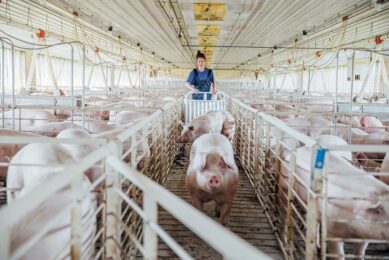Pleurisy risk higher with large number of pigs
The larger the number of animals within a confined space, the greater the risk of pleurisy.
That, in short, was concluded by the Dutch Animal Sciences Group at Wageningen University and Research Centre in conjunction with the Veterinary Centre Someren and Intervet in a study about pleurisy, the Dutch agricultural newspaper Agrarisch Dagblad reports.
The study questioned whether it was possible to reduce the number of pigs with pleurisy on the slaughter line.
At the swine research and information centre in Sterksel, the Netherlands, it was investigated whether by delivering pigs in one group from birth to the slaughterhouse, without mixing them with the other pigs, the incidences of pleurisy could be lowered.
Results
The results of this group of pigs were compared with a group which was sorted according to weight from the weaning stage. In the farrowing house, the non-mixed group of piglets grew quicker and were heavier at the weaning stage than the mixed group.
However, there were no differences between both groups at weaning stage regarding feed intake and feed conversion.
Quicker
In total, the non-mixed group grew 16 g per day quicker and had 1.1 mm thicker muscles than their mixed counterparts. The percentage of finished pigs with infected lungs had decreased from 10.3 to 5.9% by not mixing the animals.
The delivery weight to the slaughterhouse was also not affected by mixing/not mixing.
Related articles in Pig Progress:
• A new approach for pleurisy detection (Vol. 23, No. 4)
• Vaccination for App is even useful when mortality is low (Vol. 23, No. 7 )
Related websites:
• Veterinary Centre Someren
• Agrarisch Dagblad
• Intervet
For the latest pig news, subscribe here











